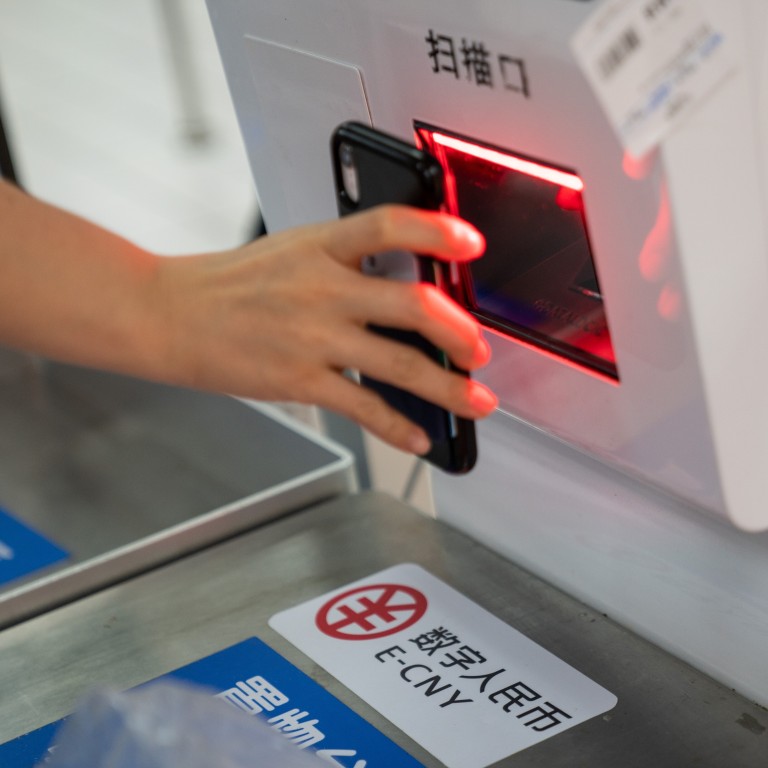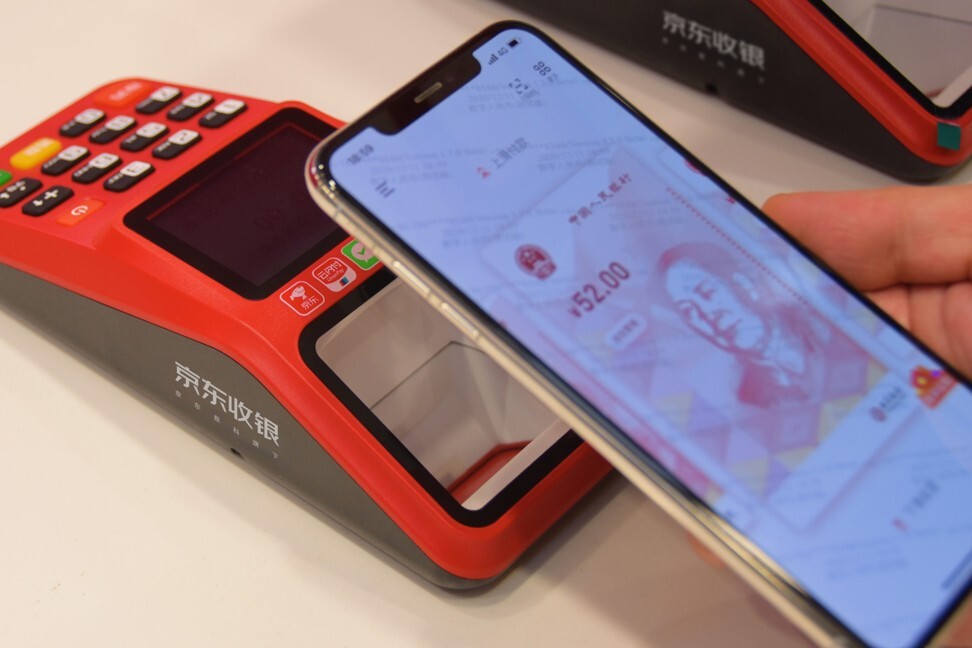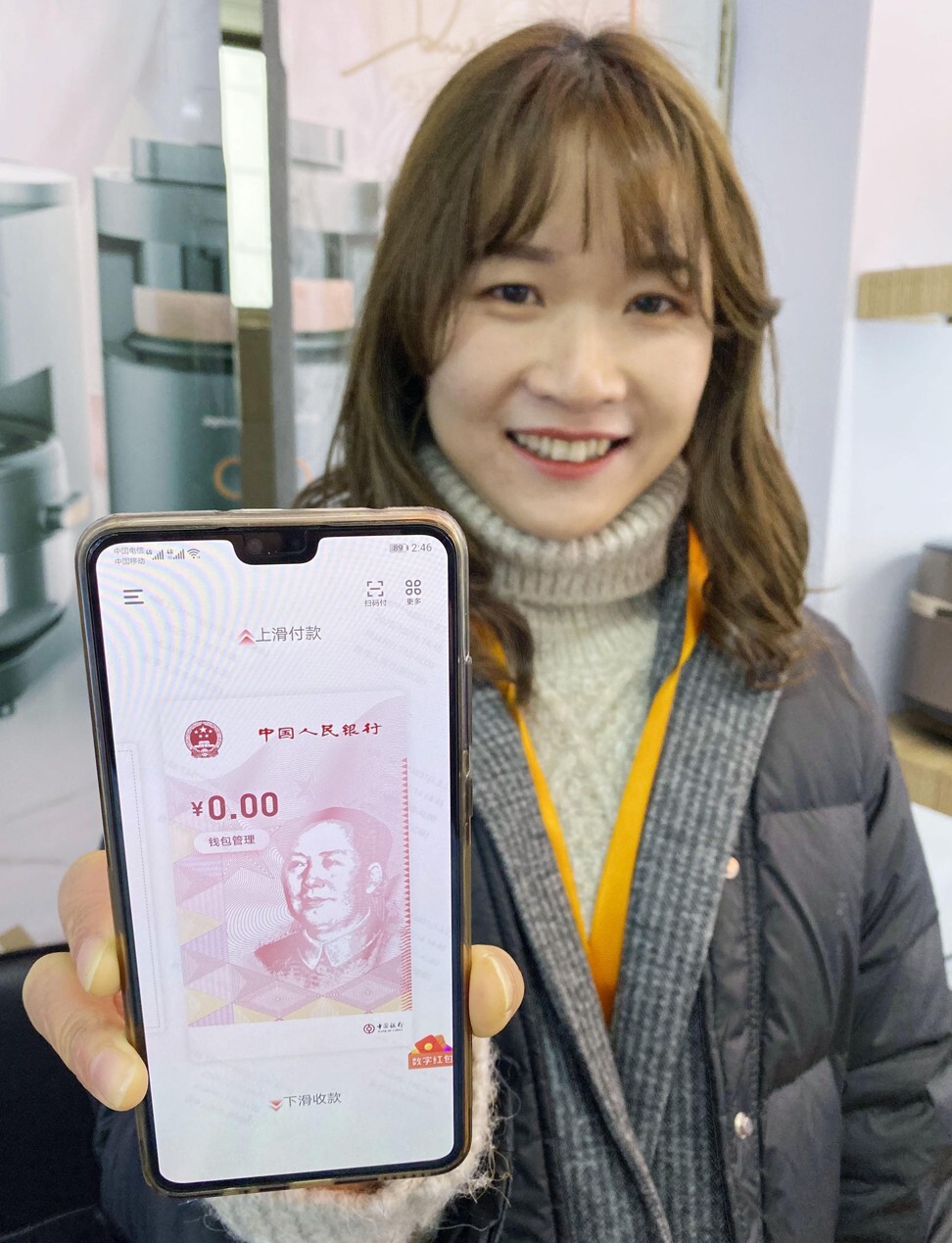
Explainer | China digital currency: when will the e-yuan be launched, and what will it be used for?
- China began exploring the concept of a sovereign digital currency in 2014 following the success of e-commerce platforms Alibaba, Tencent and Baidu
- China has already distributed some 200 million yuan (US$30.7 million) in digital currency as part of pilot projects across the country
When will China’s sovereign digital currency be launched?
China has not announced an official timetable for the official launch of its Digital Currency Electronic Payment (DCEP) system.
The first glimpse of the planned digital currency emerged in April 2020 when a screenshot of a test version developed by the Agricultural Bank of China was leaked.

Under the trial, Communist Party members were allowed to pay their membership fees in digital yuan with one unnamed state bank, local media reported.
Hong Kong is a major offshore yuan centre and a jumping-off point from which China can advance its ambitions to internationalise the yuan.
International collaboration has also accelerated between China’s central bank and its counterparts in Thailand and the United Arab Emirates. The nations are studying the use of digital currencies and blockchain technology in cross-border payments.
We know what we need to do, there are several things we need to do before we can roll out the digital currency nationally
Macau is seeking to better combat money laundering and tax evasion in the world’s biggest gambling hub, with the government set to work with China’s central bank to “study the feasibility of issuing a digital currency”.
In April 2021, the new deputy governor of the PBOC confirmed that, “moving forward, we don’t have a timeline [for rolling out the digital currency nationwide]”.
“But we know what we need to do, there are several things we need to do before we can roll out the digital currency nationally,” Li Bo said.
The PBOC will, according to Li, continue to experiment and increase the scope of its pilot projects, while also strengthening the digital currency ecosystem, including technology and infrastructure, in addition to continuing to improve its safety and reliability.
“Finally, we need to build a proper legal and regulatory environment,” he added.
According to a report from consultancy PwC, China is third behind the Bahamas and Cambodia in a ranking of the maturity of central banks’ retail digital currency projects.
The Bahamas and Cambodia take top marks in retail because their digital currencies have already been rolled out, while China is still testing the e-yuan. Only 23 per cent of retail projects have reached the implementation stage, while nearly 70 per cent of wholesale projects are running pilot programmes, according to the report.
With China in the testing phase of its digital yuan, other countries have accelerated their efforts. Jurisdictions such as Sweden and Japan have started testing their own digital currencies, while the European Central Bank is actively considering doing so. The US Federal Reserve, though, has signalled it is in no rush to get a digital US dollar off the ground.
“We can explore allowing market entities with strong cross-border financial demand and risk control capability to use digital renminbi in a convertibility pilot,” she Xing Yujing, president of the People’s Bank of China’s Shenzhen branch, in an interview with Outlook Weekly, a publication under the official Xinhua News Agency.
When did China start planning for its sovereign digital currency?
The PBOC began exploring the concept of a national virtual currency in 2014 with the success of e-commerce platforms Alibaba, Tencent and Baidu. Mobile transactions reached 347 trillion yuan (US$49 trillion) in 2019, accounting for four out of every five payments in China.
The central bank’s Digital Currency Research Institute, which is in charge of digital currency development and testing, was inaugurated in 2017, when it invited major state-owned commercial banks and other influential institutions to help design the DCEP system.
In December 2019, the institute’s head, Mu Changchun, said that the new sovereign digital currency would be “a digital form of the yuan”, that there would be no speculation on its value, and that it would not need the backing of a basket of currencies, according to the official Shanghai Securities News.

What is China’s sovereign digital currency?
China’s version of a sovereign digital currency will be used to simulate everyday banking activities including payments, deposits and withdrawals from a digital wallet.
Once the e-yuan is launched, consumers will need to download an electronic wallet application authorised by the PBOC, then link the app to a bank card so they can use their cellphone to make and receive digital yuan payments, as well as conduct transfers via an ATM machine.
The money from the linked bank account will be converted into digital cash on a one-to-one basis. There is also an option that does not require a bank account to hold and conduct transactions in the digital yuan.
Unlike other online payment platforms that are already commonly used in China, including Alibaba’s Alipay and Tencent’s WeChat Pay, the DCEP system supports payment transactions even without an internet connection. The function, called “touch and touch”, allows two users to simply touch their mobile devices together to make a transfer, leaving no payment record with a third party nor the banking system.
The e-yuan is part of the most liquid form of money supply that includes notes and coins in public circulation, but in digital form. It is issued and backed by the country’s central bank.
Is the United States concerned about China’s digital currency?
Officials at the US Treasury, State Department, Pentagon and National Security Council are believed to be bolstering their efforts to understand the potential implications.
Our goal is not to replace the US dollar or any other international currency
American officials are less worried about an immediate challenge to the current structure of the global financial system but are eager to understand how the digital yuan will be distributed, and whether it could also be used to work around US sanctions.


.JPG?itok=J8tgfPmW&v=1659948715)